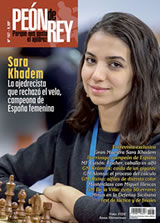1.e4! The Chess Bible - Volume 1
I think black has a wider margin for error in closed games than in open games. Even if you don't know all the details of a particular line in the first case, you'll end up with only a small disadvantage in most cases. The same cannot be said of the defenses of 1.e4. In this book, you will find that black women must act with caution if they play with an unconventional system, for I have discovered several refutations to the most popular and widely accepted lines within them.
Unloading free sample in the PDF.
I chose 1.e4 for several reasons. First of all, it's the move I've played my whole life as a chess player. In the database, I've recorded approximately 400 White games, of which 350 started with 1.e4! I've also done a lot of research on the openings covered in this volume, through my column "1.e4" for ChessPublishing.
Secondly, I think black has a wider margin of error in closed games than in open games. Even if you don't know all the details of a particular line in the first case, you'll end up with only a small disadvantage in most cases. The same cannot be said of the defenses of 1.e4. In this book, you will find that black women must act with caution if they play with an unconventional system, for I have discovered several refutations to the most popular and widely accepted lines within them.
For each opening, I've adopted the same research method. First, I conduct a detailed examination of human games, along with correspondence/email games, with special attention to the higher percentage of white wins and the number of games played. Human games allowed me to acquire natural feelings for the practical elements of the opening in question, while correspondence games (essentially human-assisted engine games) covered the necessary element of objectivity.
The next stage was my own engine analysis, using Chessbase Engine Cloud to examine critical but unexplored positions. Finally, I engage as critically as possible with existing literature, as I hope others will do with my work in the future.
The structure
At the beginning of each chapter there is an overview of the introduction, which serves to give the reader some basic basics and highlights the general concepts, extracted from the analysis section. If the reader needs a brief summary of a particular opening, I suggest you focus on the general descriptions.
The analysis section contains the main work. The reader is not expected to memorize everything; in fact, it is probably not a productive exercise. When going through a variation, it is best to stop at a point that you feel is appropriate, and that should always be the point where you find that you have fully understood the position.
Each subchapter ends with a model set, which gives the reader a simplified picture of the variation in question. As in the general description chapter, this section is largely illustrative.
Data sheet
- Product Type
- Paper
- Language
- English
- Theme
- Training
- Author
- Justin Tan
- No Pages
- 464
- Year published
- 2021
- Measurements
- 17 x 23,5 cm
- ISBN
- 9789464201123





